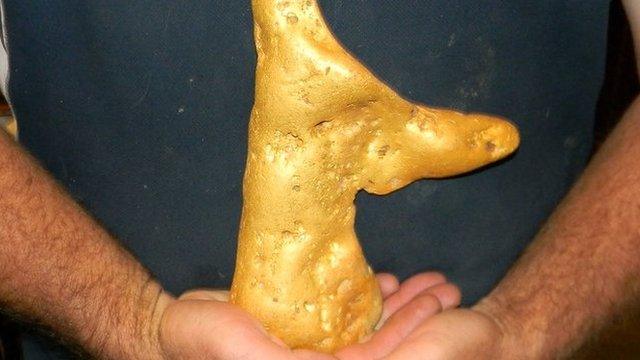Welcome Stranger: World's largest gold nugget remembered
- Published
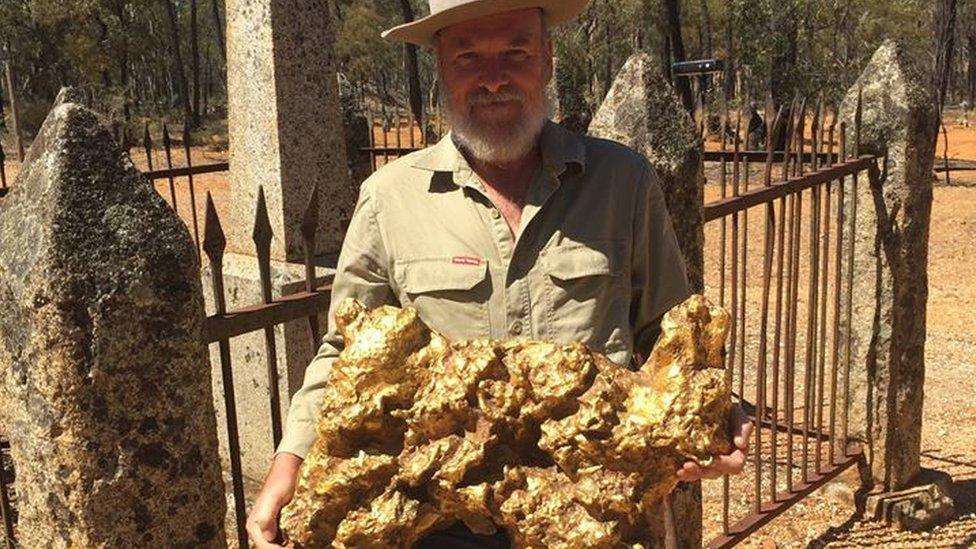
Expert John Tully, with a replica of the nugget, says the Welcome Stranger's appeal still resonates today
The discovery of the world's largest gold nugget is being remembered 150 years on.
Two Cornish miners found the huge nugget dubbed the Welcome Stranger while prospecting in the gold fields of Victoria, Australia on 5 February 1869.
It weighed 11 stone (72kg) and was 61cm long (24 inches) when it was found buried just below the surface.
Descendants of John Deason and Richard Oates who were paid just under £10,000, are gathering at the spot it was found.
As part of the celebrations is a themed play in full period costume, and a photo taken at the time has been recreated using the relatives of the two men.
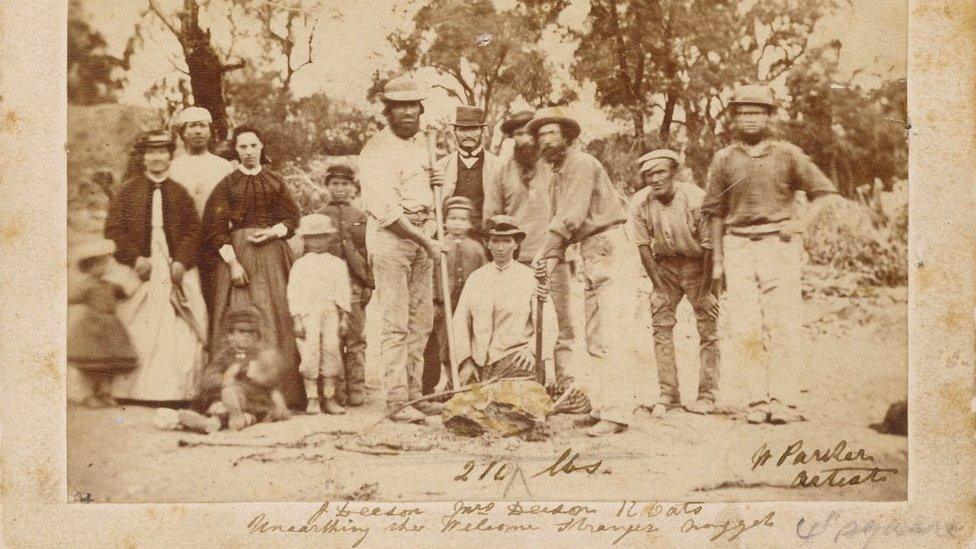
As part of the celebrations people will be recreating photos taken at the time that featured the finders and their family members
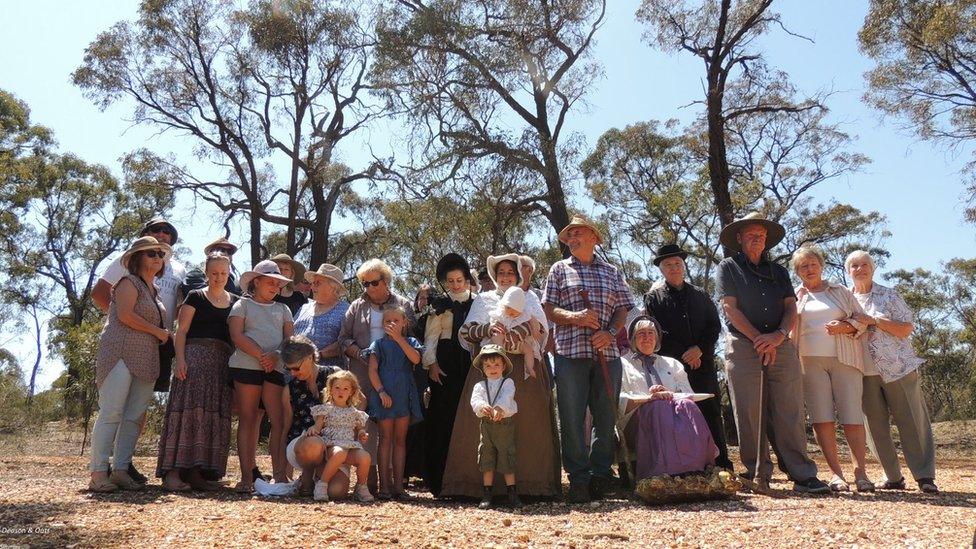
The scene recreated, complete with the crowbar
"It is a great story of two guys instantly becoming fabulously rich. In those days that didn't happen," said John Tully from the Goldfields Historical Society.
"Nowadays we have things like the Lotto where people can become millionaires overnight, but back then it didn't happen like that."
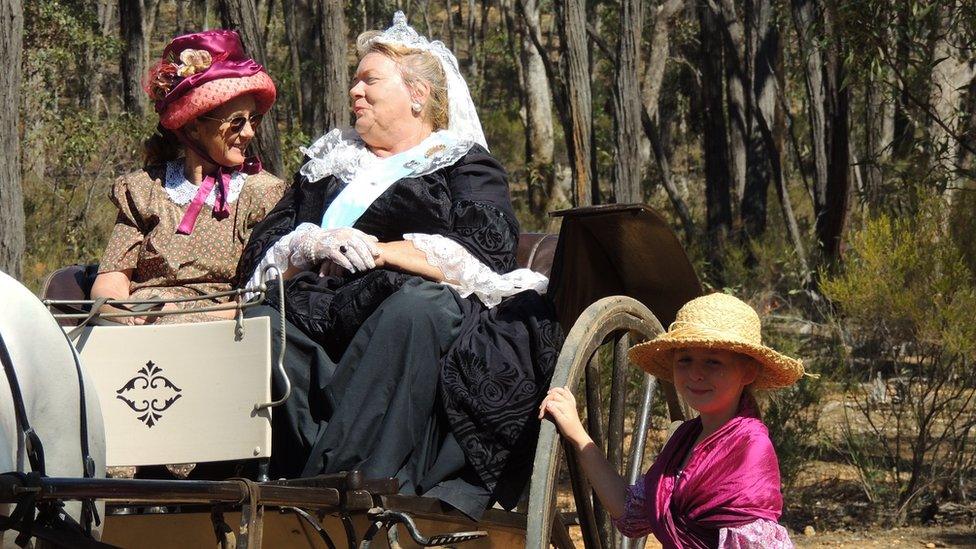
A local woman dressed as Queen Victoria made an appearance at the celebrations in Australia
Suzie Deason, 38, is the great-great-great-granddaughter of Mr Deason and still lives in the area.
She said: "When people hear my name they always ask me where the gold is, or if I am rich. Unfortunately I am not, and we haven't even got any jewellery made from the Welcome Stranger."
In the 1850s and 1860s, Moliagul - where the nugget was found lodged in the roots of a tree - was a booming gold rush town with 11 pubs.
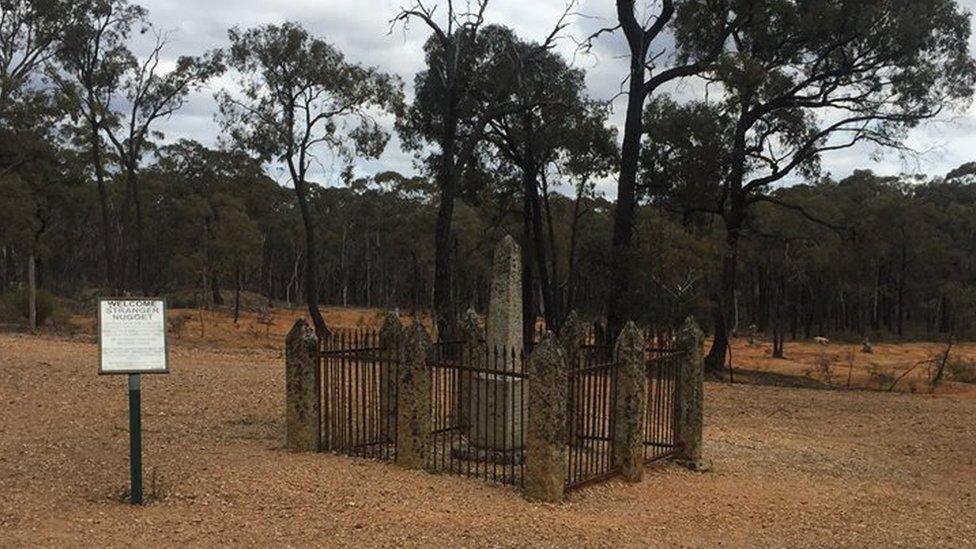
A monument marks the spot where the Welcome Stranger was found
Nowadays it is largely a farming community, no shop, no hotel and a handful of houses, but gold speculators are still drawn to the area, known as the Golden Triangle.
Mrs Deason said: "People travel here to try their luck and spend days and days trying to find their fortune. There are still some reasonable sized nuggets around but nothing like the Welcome Stranger.
"We call it gold fever. It's an illness, an addiction to finding gold."


Replicas of the Welcome Stranger are based on drawings from the time
The story of the Welcome Stranger
In the 1850s thousands of people travelled to Victoria, Australia in search of their fortune, as part of the Victorian gold rush.
They came from across Australia and around the world, and for most of them great wealth was never achieved.
But for two Cornish miners, fortune did come calling on 5 February 1869.

A large statue at Cornwall Gold near Redruth depicts the discovery
John Deason was born on Tresco in the Isles of Scilly, but moved to Pendeen in west Cornwall as a one-year-old after his fisherman father drowned.
This is where he met Richard Oates, and both are recorded in the 1851 census as working the tin mines of Cornwall.
Mr Deason emigrated to Australia in 1853, with Mr Oates going a year later to begin life as prospectors or "diggers".
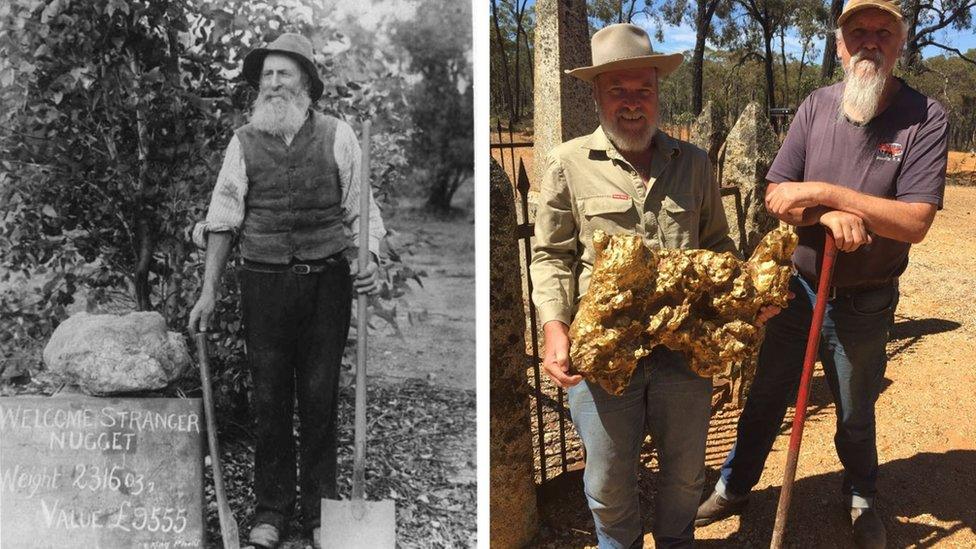
John Deason with a replica of the Welcome Stranger, and a modern day replica pictured with the original crowbar
In 1862 they arrived in Moliagul and after seven years of getting by, and making a living, the two men struck gold.
On a slope called Bulldog Gully, an enormous piece of gold encased in quartz was buried just below the surface.
It was so big, that as Mr Deason wrote "I tried to prise the nugget up with the pick but the handle broke. I then got a crowbar and raised the nugget to the surface".
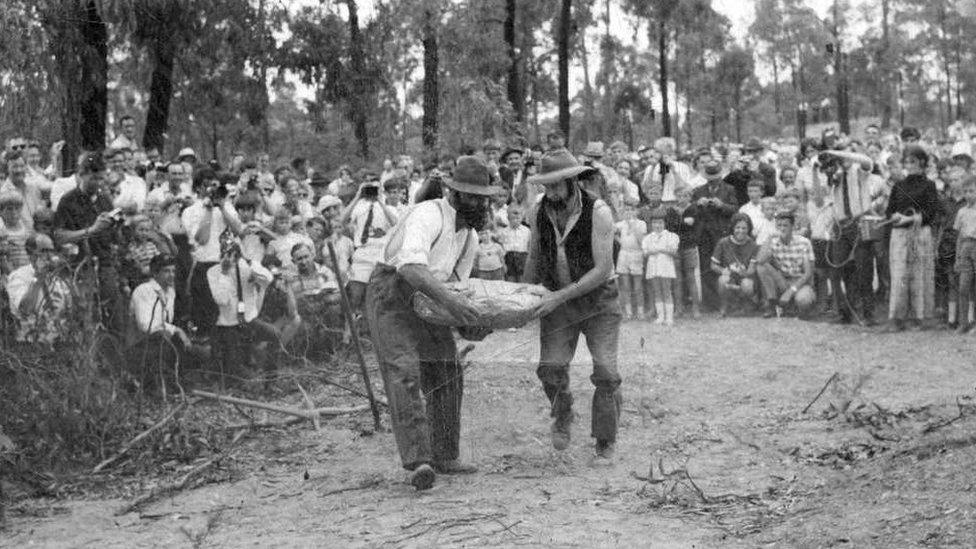
The amazing find was re-enacted for crowds
They took it to the town of Dunolly, about 12 miles (20km) away, where it was weighed at the London Chartered Bank.
A report in the Dunolly & Bet Bet Shire Express on 12 February 1869 stated: "We are glad that the monster has fallen to the lot of such steady and industrious men".
The nugget was immediately broken up, partly because it was too large for the scales, before a model could be made, or photographs taken.

A rock in the Isles of Scilly, where John Deason was from, is named Deason's Cap and some people think there is a gold nugget beneath it
A drawing was made based on the memory of those who saw it, and there is now a replica in the Dunolly Museum.
If sold today it is estimated the nugget would fetch more than £2m, and it would probably have significant prestige value.

- Published26 July 2018

- Published5 June 2015
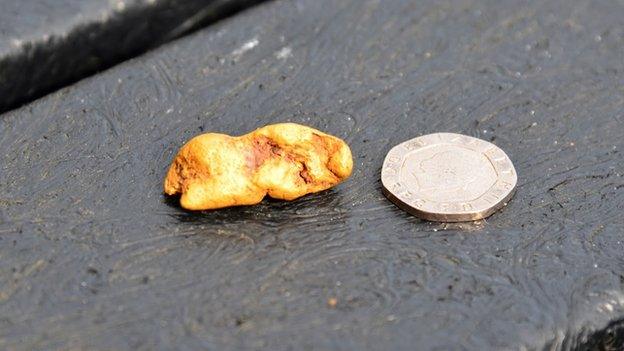
- Published17 January 2013
